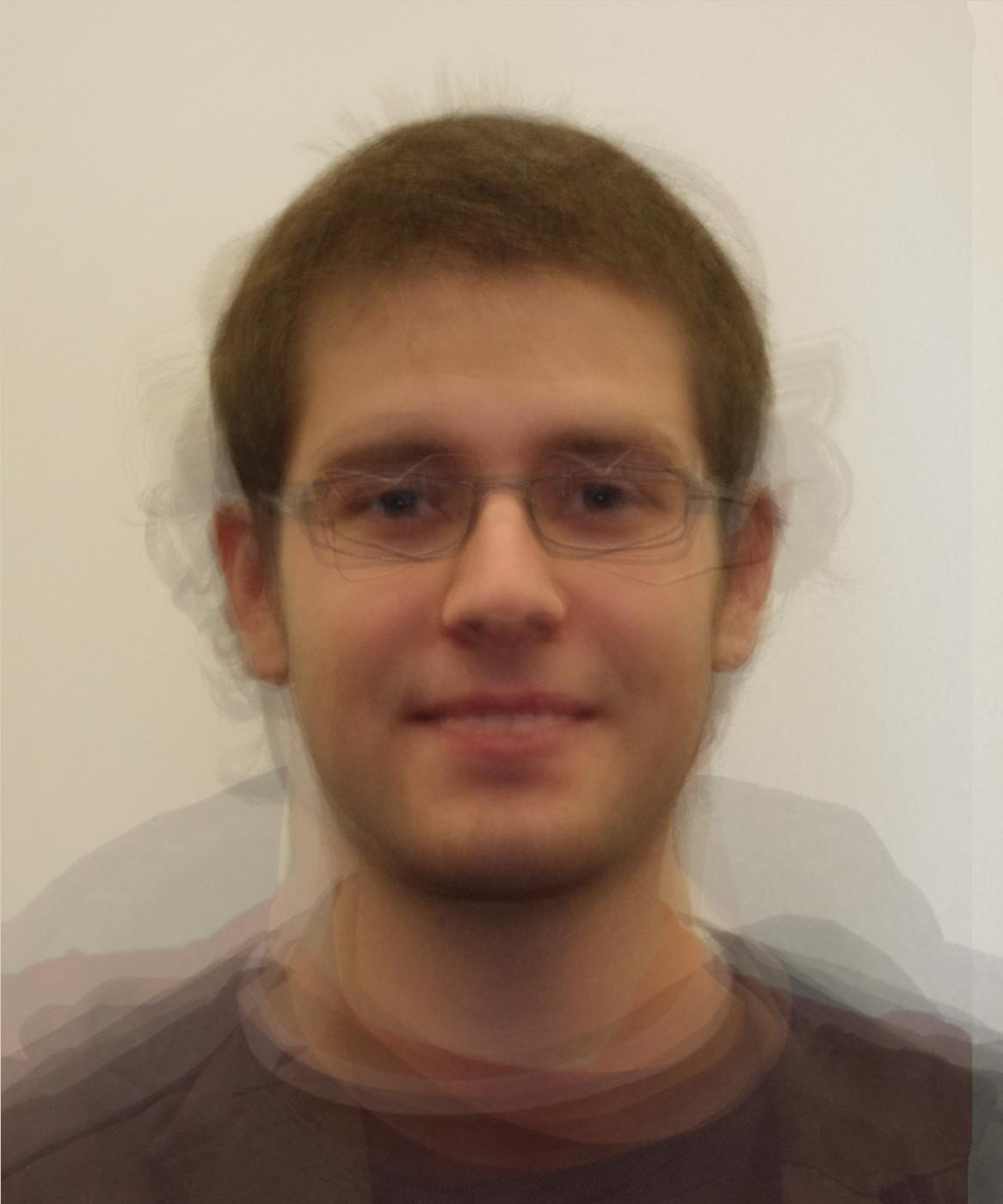Project Description
In this project, I explored some of the interesting image editing techniques that can be done
with a dataset of similar images with labeled feature point--namely my classmates' faces!
The starting point each of these techniques is the local-warp operation. In this operation,
we first find a triangulation of a sparse set of feature points. Next, we move each of the
feature points in an image to a new position, using the triangulation to define an affine warp
for the in-between pixels.
Face Morphing
With the ability to locally-warp images, we can morph one face into another. We simply start by warping each face into an in-between shape, and blend the warped images together.
Averaging Faces
Not only can we warp two faces together, we can also morph any number of faces together to find an average face.
Subpopulations
If we look at subsets of the class that share a characteristic, we can take a local average instead of a global average. This lets us answer questions like ''what does the average beard look like''?



















